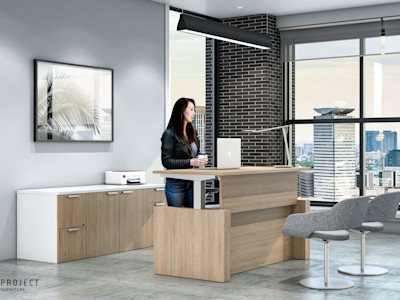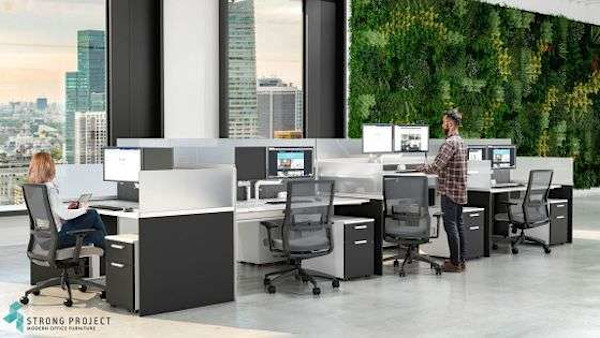Employers, Listen Up! Adjustable Height Desks Are Worth the Hype

If you banked on adjustable height desks being a millennial’s fad, you lost big. The sit-to-stand desk is not only here to stay, but the bang for the buck is multigenerational. As an employer, the health benefits that come with the mobility of simply sitting and standing to get the job done are worth every cent and the goodwill you will generate in your workforce will be immeasurable.
The Problems with Chair-living
The human body is meant to be in motion. When we are seated in a chair at a stationary desk for 40 hours a week, our muscles become weakened, circulation is compromised, and there is an undue amount of pressure placed on the vertebrae. It’s no wonder that sitting has been called the new smoking.
Implementing adjustable height desks in your modern office means your organization is taking a preventive step toward reducing employee discomfort and injuries.
Seventy percent of people sit to work and the havoc wreaked on their bodies from excessive “chair-living” is commonplace. Many suffer from coronary disease, obesity, high blood pressure, diabetes, and other chronic illness as a result of our sedentary lifestyle.
The Adjustable Height Solution
With the option to move from a sitting stance to a standing position and back again, sit-to-stand desks afford workers the opportunity to increase blood flow and bring awareness to a movement that might not otherwise occur during the workday. Other benefits of switching to an adjustable height desk include:
Increased heart rate by 8 beats per minute, resulting in weight loss and burning calories
Decreased fatigue, depression, and tension, as well as increased focus, energy, and overall happiness, according to various studies
Reduced back and neck pain
Decreased risk of heart attack and heart disease
Better posture and increased core strength
For employees whose jobs don’t have the kind of flexibility required to frequently move away from their workstations, ergonomic sit-to-stand desks provide the opportunity to switch static postures. Implementing adjustable height desks in your modern office means your organization is taking a preventive step toward reducing employee discomfort and injuries.

Workstations that are ergonomically designed may also reduce or eliminate sources of work-related stress. In many circumstances, the combination of increased productivity, along with the savings on workers’ compensation expenses alone are enough to offset the investment in adjustable desks. As you prepare for a new decade, don’t lose sight of the fact that your employees’ needs aren’t changing—their expectations are. Ergonomic office furniture is anything but new and managers and employers who are too slow to buy the “good stuff” may soon be without the “good people.”



